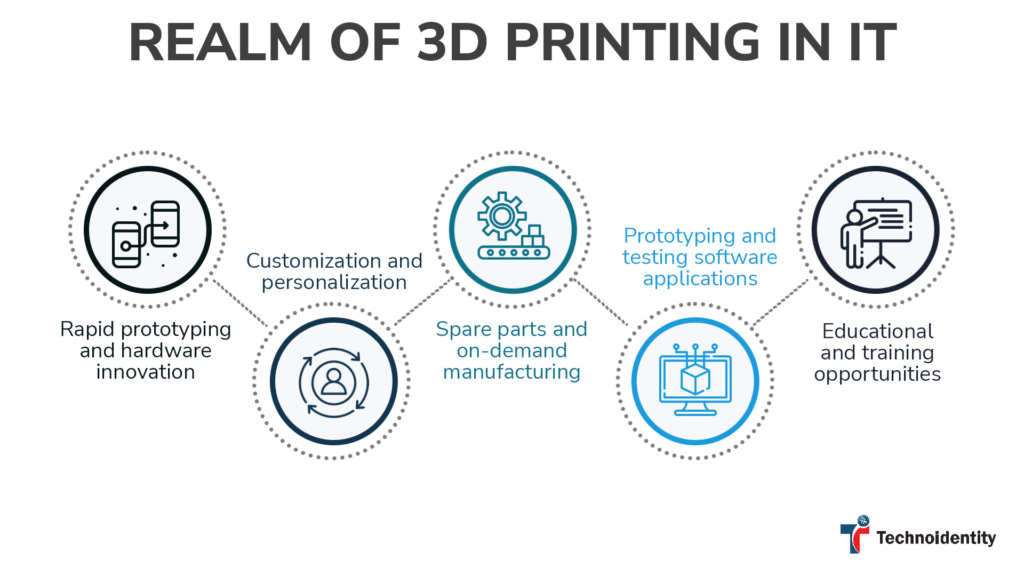3D printing, also known as additive manufacturing, has emerged as a disruptive technology with vast potential across various industries. In the realm of Information Technology (IT), 3D printing is paving the way for innovative solutions and opening new opportunities. In this blog, we will explore the intersection of 3D printing and IT and the exciting possibilities it offers in hardware prototyping, customization, software development, and more.
Possibilities of 3D printing

Rapid prototyping and hardware innovation
One of the most significant impacts of 3D printing in IT is its ability to revolutionize hardware prototyping. By enabling the quick and cost-effective production of physical prototypes, this accelerates the design iteration process.
IT professionals can create custom enclosures, components, and device prototypes, facilitating faster hardware innovation and product development cycles.
This technology empowers engineers to bring their ideas to life, test functionalities, and refine designs before moving into full-scale production.
Customization and personalization
In the era of personalization, 3D printing offers unparalleled opportunities in IT. It allows for the creation of customized products tailored to individual needs and preferences.
From computer cases and smartphone accessories to wearable devices and IoT components, 3D printing enables the production of personalized tech solutions. IT professionals can leverage this technology to design and fabricate unique, one-of-a-kind items, enhancing user experiences and fostering customer satisfaction.
Spare parts and on-demand manufacturing
Traditional supply chains often face challenges in meeting the demand for rare or obsolete spare parts. 3D printing offers a solution by enabling on-demand manufacturing. IT professionals can leverage additive printing to produce spare parts, reducing inventory costs and lead times. This capability is particularly valuable for legacy systems, discontinued products, or situations where immediate replacement is critical.
With 3D printing, IT departments can ensure the longevity and operational continuity of their equipment, minimizing downtime and increasing efficiency.
Prototyping and testing software applications
While 3D printing is commonly associated with physical objects, it also has potential applications in software development. IT professionals can use 3D printing to create physical representations of software interfaces, user experience mock-ups, or tangible prototypes of software-driven devices. This approach allows for a more intuitive and tangible exploration of software concepts, fostering effective collaboration, and enabling early-stage testing and refinement of user interactions.
Educational and training opportunities
3D printing has immense educational potential within the IT field. It offers hands-on experiences for students and professionals alike, enabling them to understand the principles of hardware design, prototyping, and production.
Educational institutions and training programs can integrate 3D printing into their curriculum to enhance technical skills and encourage creative problem-solving in IT-related disciplines. This technology fosters a practical learning environment, empowering individuals to explore and experiment with cutting-edge concepts.
3D printing presents exciting opportunities in the realm of Information Technology. From rapid prototyping and hardware innovation to customization, spare parts production, software prototyping, and education, this technology is transforming the IT landscape.
As 3D printing continues to advance, IT professionals can leverage its capabilities to drive innovation, streamline processes, and create tailored solutions that meet the unique demands of the digital era. Embracing 3D printing in the realm of IT paves way for many possibilities, fueling creativity and efficiency, and pushing the boundaries of technological exploration.


